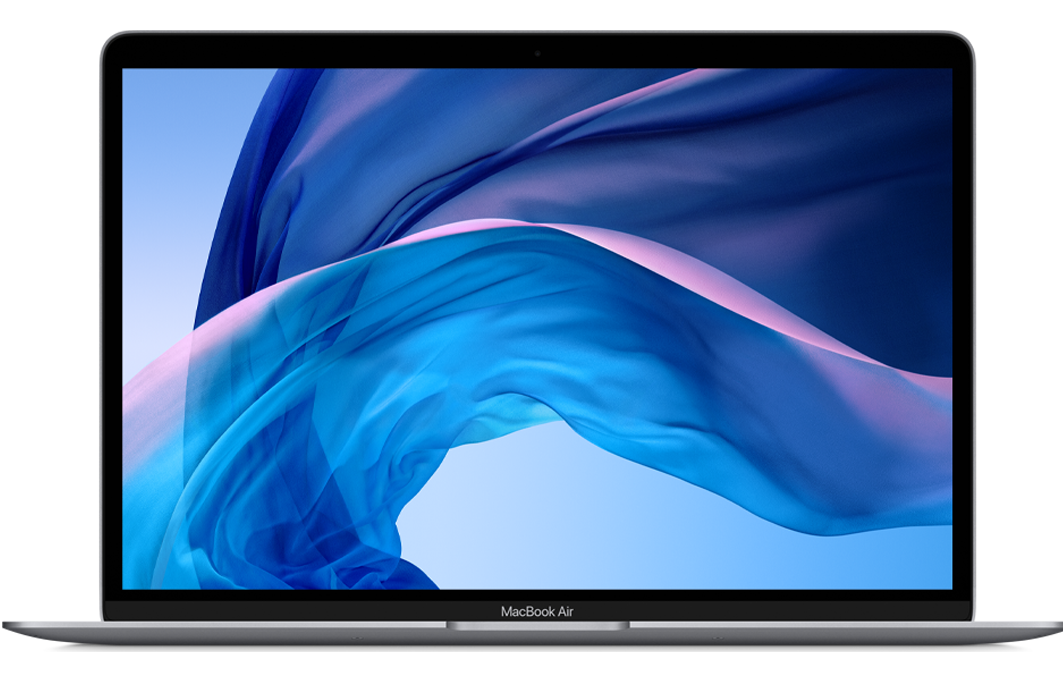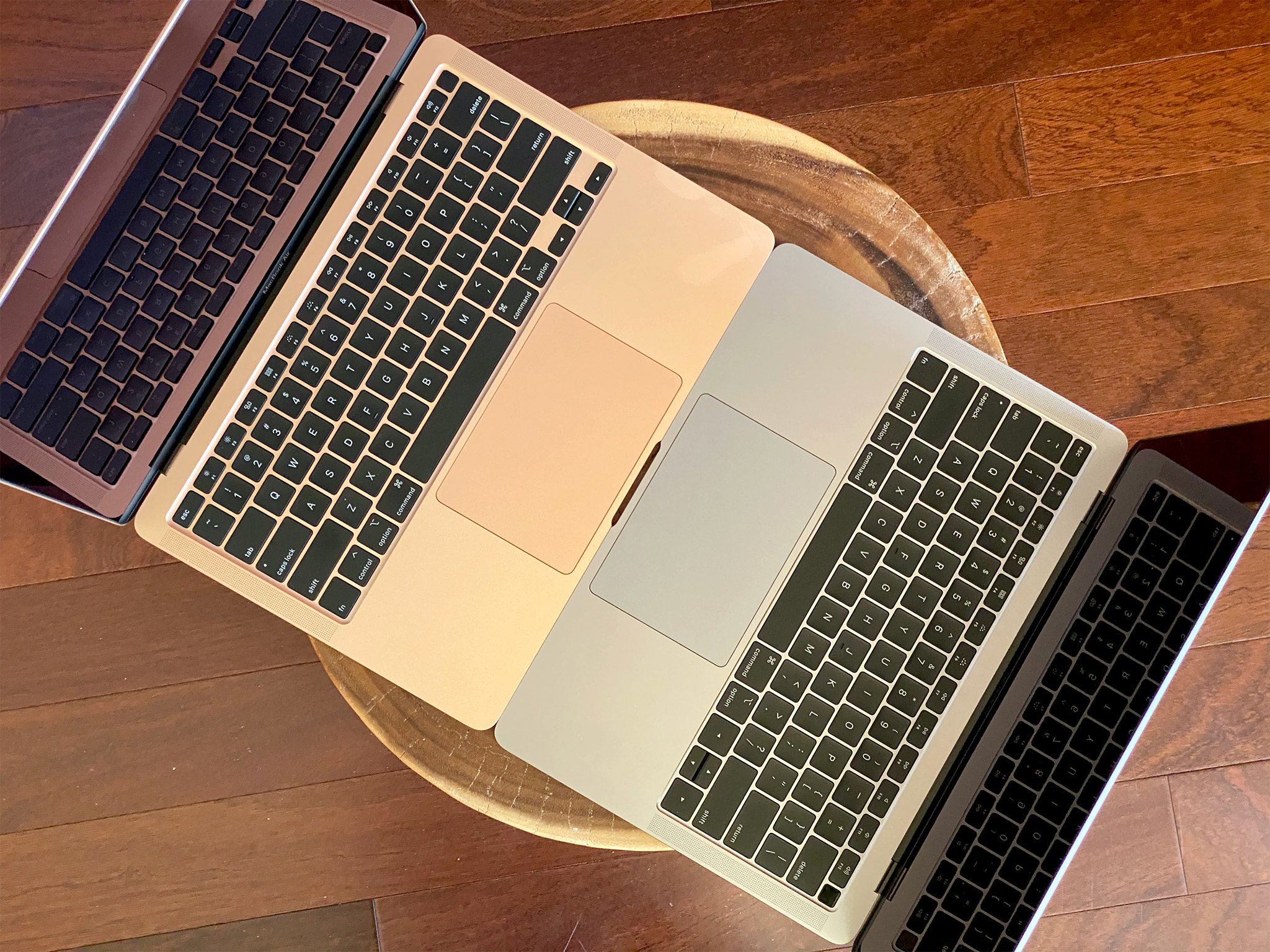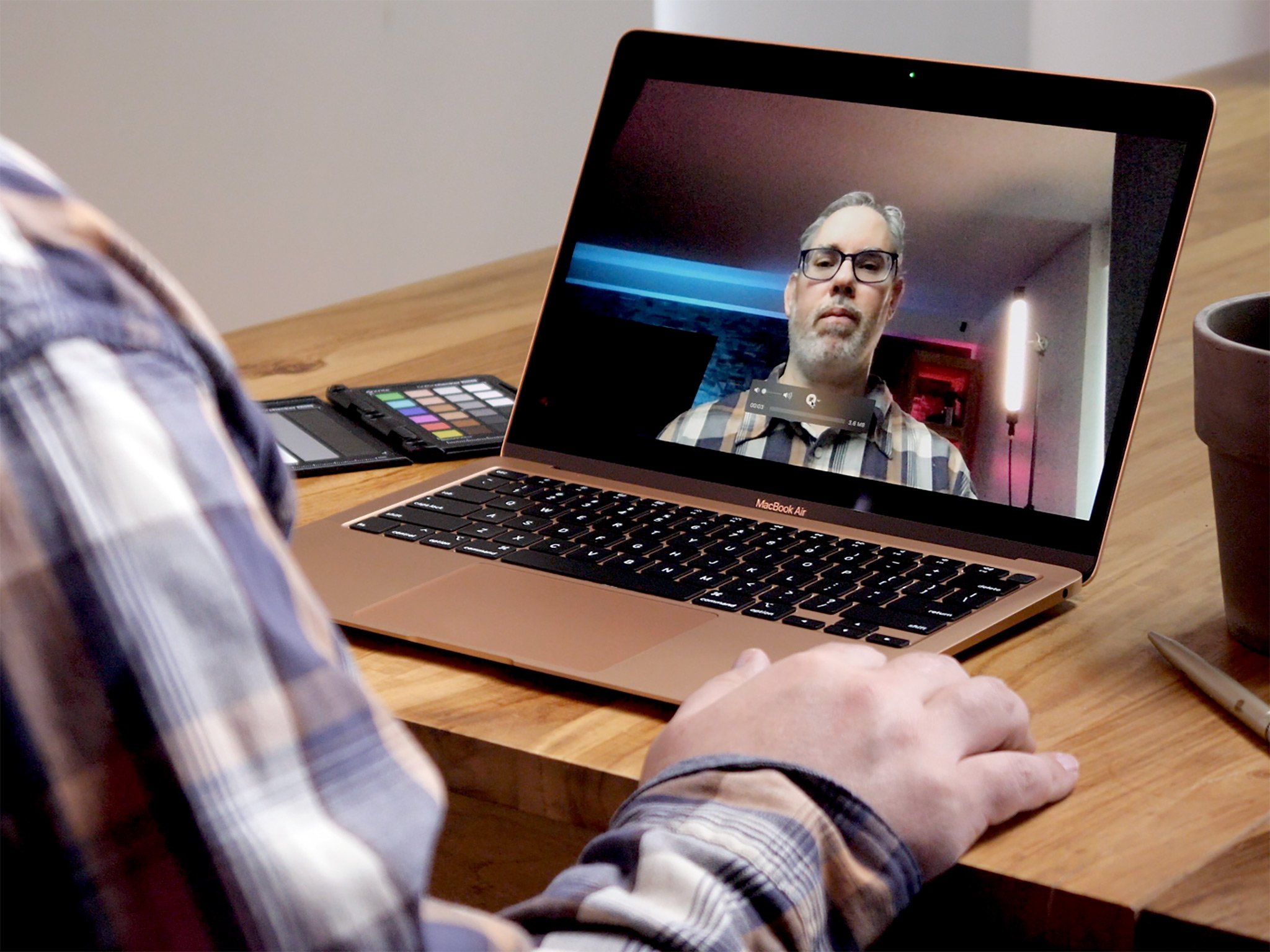The new MacBook Air, an update to the 2018 redesign, got pretty good reviews when it came out a month ago. People liked the new keyboard, the new chipsets, and the lower price. But, there were a few criticisms as well. Basically, the still low-res webcam, some concerns about thermal throttling on the faster CPUs, and the battery life.
Since then, I've had time to pound on the Magic keys, compare the webcam to pretty much everything else I have, really dig into the thermals, and there's even been a macOS Catalina supplemental update.
Air Force
MacBook Air 2020
The best MacBook for everyone is finally, fully back.
Apple's most popular Mac returns to the performance, keyboard, and pricing that made it not only so popular, but so iconic.
So, what if any difference does it all make?
MacBook Air (2002) Review: Magic Keyboard
The original MacBook Air and the beloved 2010 redesign boasted Apple's equally beloved OG scissor-switch keyboards. The 2018 redesign, though… well, that was saddled with Apple's hugely controversial butterfly keyboard.
So, arguably the biggest and most important improvement to the 2020 MacBook Air is its new, scissor-switch-based Magic Keyboard. The one that debuted last year the 16-inch MacBook Pro.
It promised to keep the stability of the butterfly-switch keyboard but restore some of the travel and all of the reliability of those beloved scissor-switch keyboards of yore — the ones that typed out a metric gazillion coffee-shop term papers and tech event live blogs alike.
But does it add enough travel for the clickety-clackety keyboard crowd? Does it keep enough stability for the people, like me, who actually preferred the feel of the butterfly? And are reliability issues really, truly, a thing of the past?
Well, 5 months on the new 16-inch MacBook Pro and one month on this new MacBook Air version, and here's what I can tell you.
There's definitely more travel. Not enough to make the clickety-clackety crowd really happy, but a fair amount for any ultra-light. The stability is great, no return to the loosey-goosey at all. And, as to the reliability…
I've had no repeating keys. No dead keys. No issues at all.
I've had no repeating keys. No dead keys. No issues at all. Either for me, someone who had to have both an old scissor-switch MacBook Pro keyboard replaced, and two new butterfly MacBook Pro keyboards fixed, or reported on websites or social media, as far as I can tell.
It's going to take a year or two of that to earn back the trust of many MacBook keyboard owners. But, so far, so zero problems.
There have been some complaints about how loud they are. I'm not quite sure if that's people reacting to the actual sound level or to the precise tone of the sound.
Either way, here's what the 2020 MacBook Air with Magic Keyboard sounds like, as recorded by my Heil PR 40 XLR microphone, through a USBPre 2 interface. Compared with, in order, the 2019 MacBook Pro with Magic Keyboard, the 2018 MacBook Air with Butterfly Keyboard Gen 2, the 2017 MacBook Pro with Butterfly Keyboard Gen 2, the 2015 12-inch MacBook with butterfly keyboard Gen 1, the 2013 MacBook Pro with scissor keyboard, the 2011 MacBook Air with scissor keyboard, the current iPad Pro Smart Keyboard, the current iMac Pro Magic Keyboard, and then back to the 2020 MacBook Air.
For me, it's a little loud but not overly so. Let me know what you think, especially now that many of us are working in potentially quieter — or noisier — home settings rather than busy offices or coffee shops.
MacBook Air (2002) Review: Performance
The 2010 MacBook Air models had full-on Intel U-series laptop processors. Big kid chips. I used a 2011 model for years while editing podcasts and photos and covering tech events, even making videos from show floors and outside product intros. It was terrific but… a little slow at rendering. Which is why I switched to a Mac Book Pro in 2013.
The 2018 MacBook Air went with the more power-friendly Y-series ultra-mobile processors, same as the 12-inch MacBook. Well, processor. It only came with the dual-core i5. Apple didn't seem to think that generation of i3 or i7 offered significant enough advantages to even include them even as build-to-order options.
And… Y-series have never been my favorite. I'm all for low-power, I just think Apple's A-series chips, the ones they put in iPhones and iPads, runs absolute rings around anything Intel is doing these days.
That said, the 2020 MacBook Air includes Intel's latest Ice Lake processors. These are 10th generation, built on Intel's new Sunny Cover architecture and the new 10-nanometer process. Finally. And Apple is now offering options for i3, i5, and i7. What's more, the i5 and i7 are now quad-core.
Some have been critical of this, calling the i3 anemic and saying it's an under-powered cost-cutting option only there to hit that magic $999 price point. And at the opposite end, that the i7 as too hot for the current MacBook Air design and is being offered merely as a way to up-sell people on performance they can't make full use of.
Others have recommended the i3 for having better-sustained performance and ramping up the fans less during normal use. And the i7 for people who appreciate snappiness and who's workloads really benefit from short bursts of maximum effort.
And, unfortunately, modern Intel silicon, including things like thermals and turbo boost, just aren't well understood, including by people who press buttons on synthetic benchmarks and then put fire emoji in titles.
So, I got Dr. Ian Cutress from AnandTech on the line to help explain it all. Just hit play on the video above and listen. Cool? Cool!
For my part, I still recommend the i5 for most people.
For my part, I still recommend the i5 for most people. If you're sure you won't do any heavy work and hate fan noise, maybe you can get by on the i3. If you think you'll benefit from a lot of short burst performance, then you may be good with the i7.
I think part of the problem is, some people really, really want the MacBook Air to be a way to get Pro-level performance for half the weight or price. But, if you have anything approaching real, Pro-level workflows, if you want to run a ton of Final Cut or Logic, you know, Pro, or Virtual Machines, or more demanding games, you can do it on the Air but your time-to-output and your stress level will be ever so much higher than if you just did yourself a favor and got the current Pro or waited for the next one. If you can afford it, of course.
In my original review, I color graded and edited 4K Canon RAW Lite in Final Cut Pro X on the i5 2020 MacBook Air and exported it to ProRes 422. And it totally worked. It just took 5 times longer than the i9 16-inch MacBook Pro to do it. I did it as a maximum load test, same way I do Pokemon Go events on iPhones.
But, just because you can... doesn't mean you should, especially not if it's an everyday workload for you. I mean, I know every tech nerd wants every shiny new product to be for us, the Air really is meant to be the MacBook for everyone else — for the vast majority of people who's workloads and priorities are decidedly non-pro. And, for those workloads, this silicon, from CPU snappiness to core-count, graphical execution units to the accelerators on Apple's own custom T2 chips, this really is the best silicon ever inside a MacBook Air.
And, while Apple can and absolutely should continue to tweak the thermals to get as much performance as possible from the Intel inside, given the kind of ultra-light Macs Apple really wants to make, I don't think we'll see really significant improvements until that Intel is no longer inside.
MacBook Air (2002) Review: Battery life
For battery life, I've been consistently getting about 8 hours a day of reading and writing, watching YouTube and Nebula, at an average of 75% brightness. That's without video editing, which can halve it, and using Safari and not Chrome, but I do run Electron apps like Slack which are every bit as power inefficient. Apple rates the dual-core i3 at 11 hours for that kind of workload, so 8-hours for the quad-core i5 is by no means a deal-breaker, but it'd be great if every Air could hit iPad-class battery life.
Again, even if it takes Apple chips to do it.
MacBook Air (2002) Review: Camera & Mic
The MacBook Air has never had a terrific camera. No MacBook has, really. Even when the lids were still thick enough to house a glowing Apple logo, the cameras inside were middling at best. And now those lids are thinner than the thinnest iOS device.
A decade ago, almost all laptop cameras were bad, so it wasn't really something that stood out. Even now, today, so many laptops have such bad cameras it still wouldn't really stand out. Except for two things:
How much Apple has improved MacBook speaker and microphone quality, which used to be almost as universally bad across the industry, and how much Apple has improved front-facing cameras on the iPhone and even iPad.
Joanna Stern already did a terrific video comparing the new MacBook Air camera to several other laptop cameras and the iPhone 11, in good light, backlight, and low light.
So, here, I want to do a different comparison that combines microphones and speakers with the camera. Because, Apple's big pitch with the recent audio upgrades is that, if you don't have access to your fancier, higher-end kit, in a pinch, you can still get by with the built-in. And, I would just all-caps love it if Apple could have our backs in the exact same way with video.
Originally, I think the expectation was that if you had to travel, you might need the better audio and, I'd argue, you should have the better video as well. Now, many of us are stuck at home and on video conference calls all day, for work and for extended family and friends, and the audio and video on our computers have become our windows to the world and our primary means of maintaining even a semblance of human connection.
On the iPhone, Apple's cameras are among the best in the industry. Given the lack of z-index, I don't know if it would take another wedge, a periscope design, hell, I know I'm in the minority but I'd even take a camera bump at this point, I'd just love to see the same best-in-class cameras on the Mac.
Because Apple's already, increasingly, nailing the audio by doing just that.
MacBook Air (2002) Review: Conclusion
I said in my original review that the 2020 MacBook Air fixed the three biggest issues with the 2018 MacBook Air, bringing it back in line with that beloved 2010 MacBook Air: The keyboard, the performance, and the price.
Yes, it's not intended for pro workloads, the sRGB display isn't as bright or colorful as pretty much every other Apple display on the market, it still hasn't shrunk the bezels or added Face ID, and the camera just isn't good, but from the faster memory to beefier base storage, the better processors and graphics to the new Magic Keyboard, to once again hitting that $999 U.S. price tag — $899 with the education discount, one month later I'm going to say again what I said before: The Air is fully, finally back as the best everyday Mac.
And it's light but sturdy, thin bug wedge-shaped design, with the convenience of Touch ID and the productivity and creativity made possible by all the free built-in apps — and best in class App Store apps, are just as true today, moving from desk to sofa to bed to balcony as they ever were moving from work to home to plane to coffee shop.
Air Force
MacBook Air 2020
The best MacBook for everyone is finally, fully back.
Apple's most popular Mac returns to the performance, keyboard, and pricing that made it not only so popular, but so iconic.
MacBook Air (2020) review: Keyboard, thermal, camera tested! posted first on http://bestpricesmartphones.blogspot.com



No comments:
Post a Comment